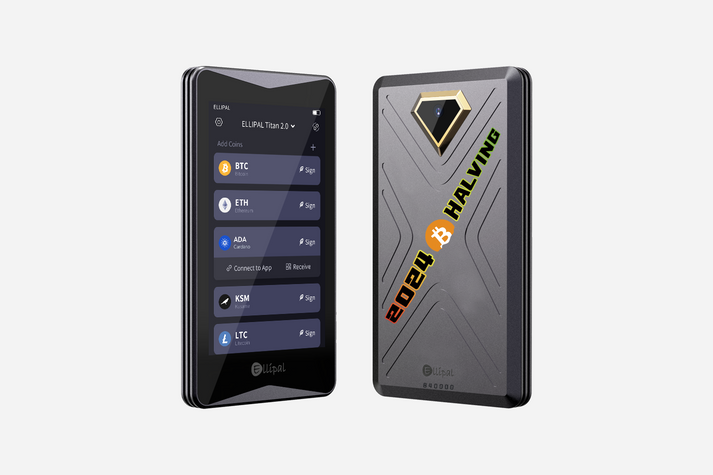Unlocking the Secrets: How Cold Wallets Keep Your Bitcoin Safe!
In recent years, Bitcoin has emerged as a revolutionary form of digital currency, captivating the interest of investors, tech enthusiasts, and everyday users alike. However, with its growing popularity comes the pressing need for security in the cryptocurrency world. As the value of Bitcoin continues to rise, so do the threats from hackers and malicious actors looking to exploit vulnerabilities. This is where the concept of a cold wallet comes into play—an essential tool for safeguarding your Bitcoin assets. A cold wallet, unlike its counterpart, the hot wallet, offers a layer of security that is crucial for anyone serious about protecting their investments. In this article, we will delve into the intricacies of cold wallets, how they function, and why they are vital for anyone looking to secure their Bitcoin holdings.

Understanding Cold Wallets
Cold wallets are a type of cryptocurrency wallet that stores your Bitcoin offline, thus minimizing the risk of hacking or theft. In contrast, hot wallets are connected to the internet and are more vulnerable to cyber threats. The primary principle behind cold storage is its offline nature, which acts as a fortress for your digital assets. There are various methods of cold storage, including hardware wallets and paper wallets, each offering unique advantages. By removing your private keys from the internet, cold wallets ensure that your Bitcoin remains safe from prying eyes and cybercriminals. When I first started investing in Bitcoin, a friend of mine emphasized the importance of using a cold wallet. He shared how a simple oversight with a hot wallet had cost him a significant amount of money. This experience reinforced the necessity of understanding the difference between these two types of wallets.
How Cold Wallets Work
The technical workings of cold wallets involve several key processes designed to enhance security. To begin with, cold wallets generate cryptographic keys offline, which means that your private keys are never exposed to the internet. When you want to make a transaction, the process involves signing it offline and then broadcasting it through a hot wallet, ensuring that your private keys remain safe. Accessing funds stored in a cold wallet typically requires connecting your device to a computer only when necessary, and even then, keeping the device disconnected after the transaction is crucial. I remember the first time I set up my cold wallet; it felt like I was taking my financial security into my own hands. By following the steps carefully, I could see how the technology worked to give me peace of mind. The understanding of how these wallets function truly empowers users to manage their Bitcoin securely.
Types of Cold Wallets
There are various types of cold wallets to choose from, each tailored to different user needs. Hardware wallets are physical devices that securely store your private keys and often come with additional security features like PIN protection. On the other hand, paper wallets involve printing your private keys and public addresses on paper, effectively keeping them offline. While they are simple and secure if managed correctly, they can be lost or damaged easily. Additionally, some users opt for air-gapped computers, which are never connected to the internet, allowing them to generate and store keys securely. Each type of cold wallet has its own features and benefits, catering to varying levels of technical expertise and security requirements. A friend of mine who is a seasoned investor swears by hardware wallets for their combination of security and ease of use, which has made the process seamless for him.
Advantages of Using Cold Wallets
Using cold wallets comes with a multitude of advantages, making them a preferred choice for many Bitcoin holders. The most significant benefit is enhanced security; by storing your Bitcoin offline, you are shielded from online threats such as hacking and phishing attacks. Additionally, cold wallets provide peace of mind, allowing users to feel confident that their investments are safe from potential risks associated with online storage. For those who hold a substantial amount of Bitcoin, the added security of a cold wallet becomes even more critical. The assurance that comes with knowing your assets are securely stored offline is invaluable, especially in an era where cyber threats are rampant.
Best Practices for Cold Wallet Security
To ensure the highest level of security for your cold wallets, certain best practices should be followed. First and foremost, backup strategies are essential; always create multiple copies of your wallet's seed phrase or private keys and store them in different secure locations. Safe storage locations, such as safety deposit boxes or secure home safes, are also vital for protecting your cold wallets from theft or damage. Additionally, maintaining privacy is crucial—avoid sharing details about your cold wallet setup with anyone to minimize risks. When I shared my cold wallet experience with a group of friends, I emphasized the importance of these practices, as they can mean the difference between securing your assets and losing them altogether.
Safeguarding Your Bitcoin Investments
In summary, cold wallets are a critical component of Bitcoin security, offering users a reliable way to protect their digital assets from potential threats. Understanding how cold wallets work, the different types available, and the best practices for their management can significantly enhance your cryptocurrency safety. As the world of digital currency continues to evolve, it’s essential to stay informed and proactive about safeguarding your investments. Whether you're a seasoned investor or just starting, considering a cold wallet for your Bitcoin can provide the security and tranquility you need in this ever-changing landscape.







